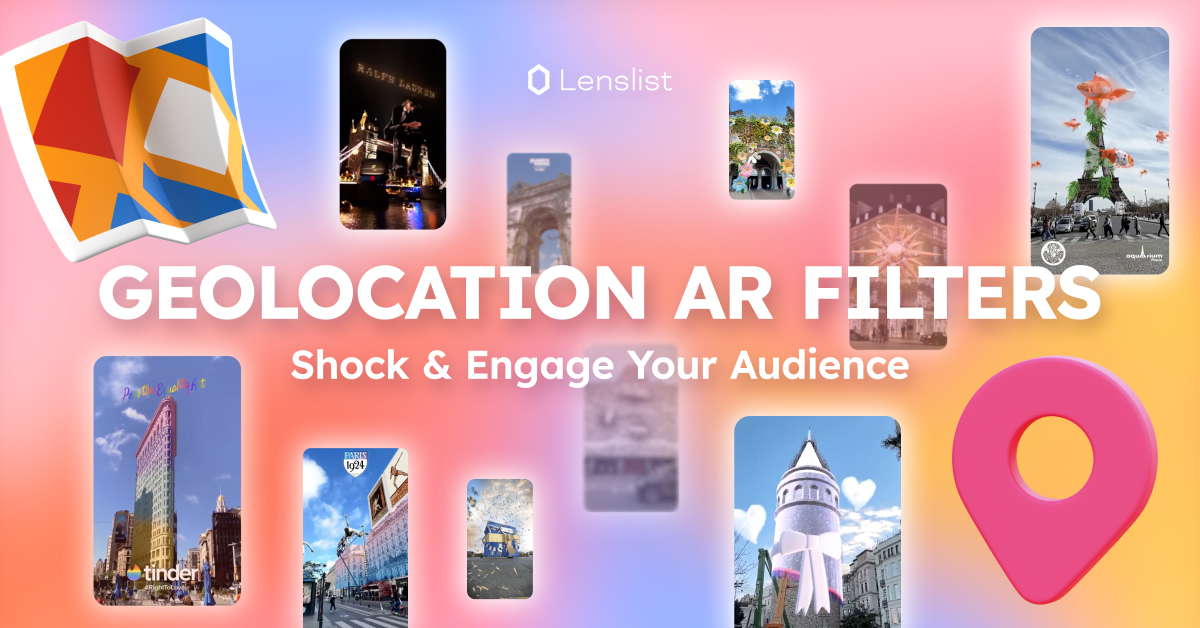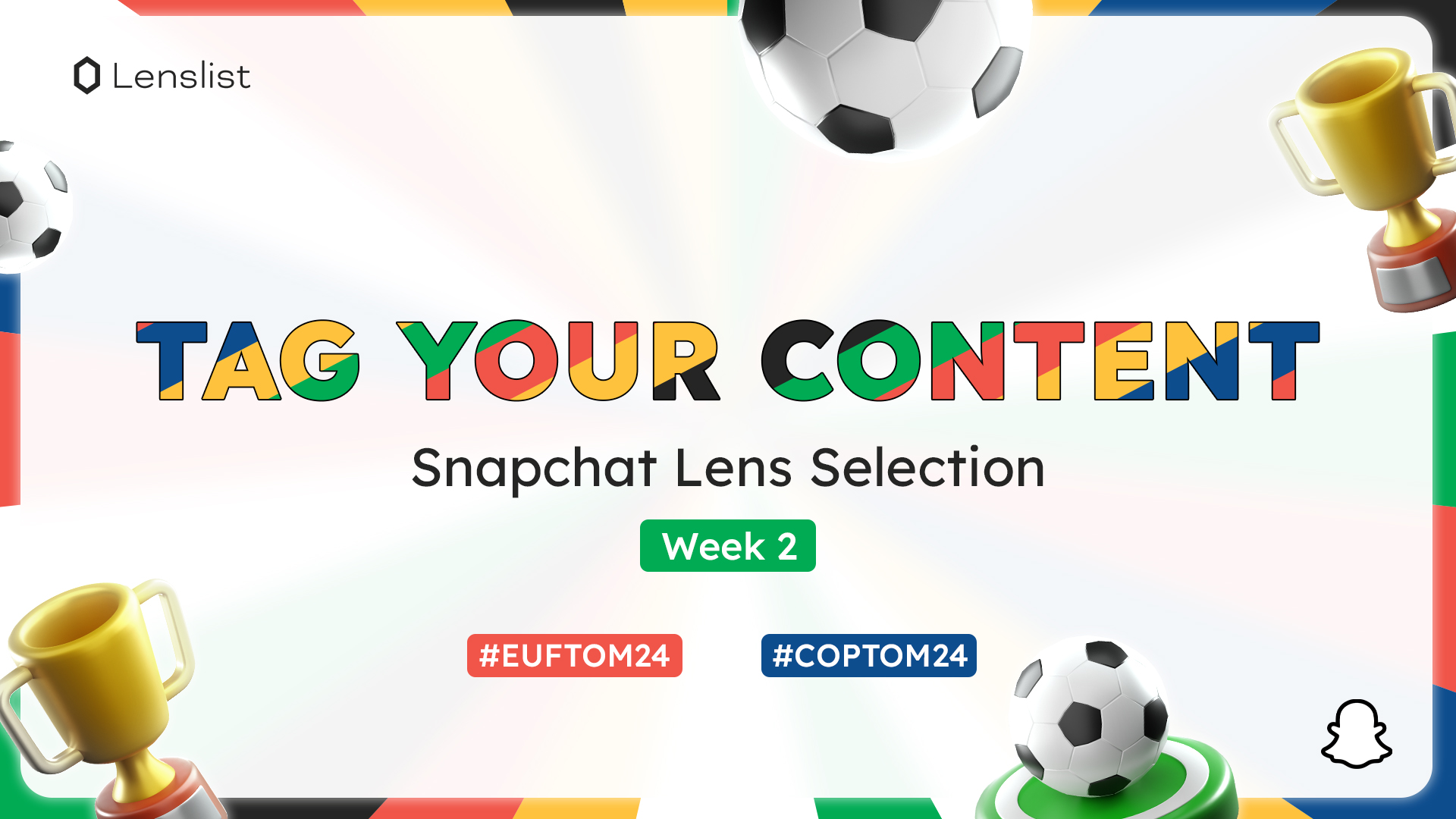Geolocation AR Filters: Shock & Engage Your Audience

We often say that AR can transform the world around us, and this time, we mean it literally.
Buildings covered in blooming flowers, world-famous landmarks destroyed or redesigned, fun AR games in real-life surroundings, an interactive tourist guidebook; there are tons of options to pick from, dozens of new ways to augment your reality. 😉
Yet, the biggest advantage of geolocation AR filters is that they simply leave a long-lasting impression.
What is geolocalization, and how can it be connected to AR?
Geolocalization enables devices to identify and understand the real-world geographic location of an object or person using various methods such as GPS (Global Positioning System), IP address analysis, or Wi-Fi positioning. This data can be used for navigation, location-based services, and personalized content delivery.
AR filters based on geolocalization apply specific graphics, animations, or information through the device’s camera. These effects can offer unique experiences tied to particular places, such as city landmarks, events, or regions, enhancing user interaction by providing contextually relevant and immersive content.
Enhance Your Customers’ Travels
As the traveling season is at its peak, tourists constantly seek new experiences and innovative ways to explore new places. Augmented Reality can significantly enhance traveling, especially with geolocation as its base.
Seeing the Eiffel Tower or Tower Bridge in real life is already impressive, but what if, instead of posting a normal picture of it on your social media, you could make a video with the landmarks changing colors or dragons flying over them? Geolocation AR filters offer a richer and more immersive journey, enabling tourists to connect historical landmarks with cutting-edge technology.
by HBO Max
by Busterwood Studio
by Royal Commission of Alula
Aside from enhancing sightseeing, geolocation AR filters can be used in more practical ways during our travels. They can highlight popular attractions, local restaurants, and entertainment venues tailored to the user’s exact location.
Tourists can also use geolocation AR filters to easily navigate unfamiliar streets, as virtual signs and directions are seamlessly integrated into their surroundings. By blending the physical and digital realms, geolocation AR filters level-up the travel experience, making it not only more informative but also more engaging and personalized.
Geolocalization AR Filters: CGI Advertising, but make it engaging
In the last few months, the marketing world has overflowed with FOOH (fake-out-of-home) advertising, setting the expectations bar very high for digital marketing campaigns content.
We witnessed bus-sized purses driving around the city (Jacquemus), got surprised by the football jersey actually hanging over The Tower Bridge in London (Chelsea FC) or shocked by helicopters flying around with giant sneakers (Adidas).
Now that the audience has become accustomed to those attention-grabbing visuals, why not take it a step further and let users actively participate in the experience rather than just looking at it on social media?
by diorbeauty
by Amazon Prime Video
by capitolasocial
Connecting CGI advertising with Augmented Reality crafts an experience that meets the demands of today’s consumers: it’s relatable, engaging, and interactive.
After seeing a viral video with thousands of likes, comments, and shares, users are able to join the trend by making their own location-based content and sharing it with even wider audiences.
The cycle of user-generated content continues, offering users immersive and easily accessible experiences.
by L’Oréal Professionnel x Sephora
by busterwood_studio
by ralphlauren
Location-based AR Scavenger hunts
While standard forms of advertising can effectively spread awareness, the most effective way to capture people’s interest and prompt them to take action is by directly engaging them in the campaign.
Scavenger hunts, often activated through QR codes, engage multiple people by allowing users to enjoy the experience with friends and family, and enable interaction with the product in familiar settings such as parks and nearby stores – just like the Netflix Stranger Things campaign activated via QR codes inside Walmart stores.
Activated at specific locations, such hunts can be both educational and entertaining. For instance, by following QR codes scattered around Christopher Park, users can delve into the history of Pride and commemorate the park’s significance as the birthplace of the movement.
Is it worth it? 🤔
With the new generation of consumers expecting more personalized content, geolocation explores the possibilities of engaging the audience by providing entertainment, personalisation and that shock value of transforming immediate surroundings.
by simone_creativestudio
by this.is.tommy
by kamilgibibisey
Limited access
Typically, AR Filters are accessible to everyone; all you need is a smartphone to immerse yourself in the AR world, instantly providing thousands of engagements with the filter. However, with geolocation, the experience is confined to a specific area, limiting the number of people who can interact with it.
Growing opportunities
Despite its limited access, geolocation AR Filters can greatly enhance marketing campaigns. A single person merely needs to point their camera at a famous landmark to activate the experience, share it on social media, and astound their friends with breathtaking visuals.
Subsequently, followers can engage by liking, commenting, and sharing the video, generating digital buzz around the campaign and leaving a lasting impression with virtual objects transforming renowned locations.
While hundreds may not use them, thousands will remember.


